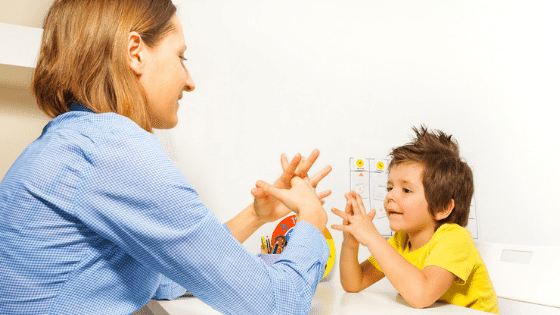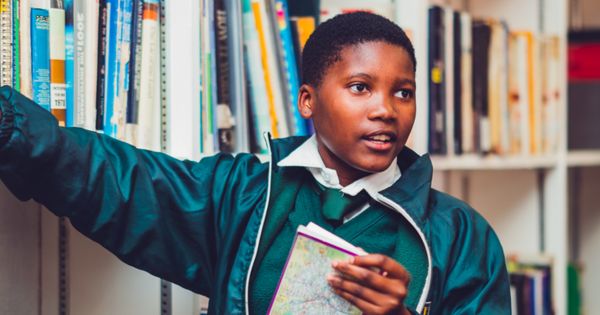The best way to teach your kids about autism is to understand what autism means and what an autistic child goes through and how they perceive their environment and the world around them to better understand how to act around them and be mindful of how you need to approach and accommodate them.

What is autism?
While there is no cure for ASD, there is expectation through treatment. Many children can interact, learn and communicate and through research and conclusions mental health experts and care providers have gained insight into how to break through the barriers of these children.
Here are a few things you need to know about children with ASD:
- They may not be proficient with reading nonverbal communications and may not act in response to your frown or smile. Don’t allow your feelings to get hurt if they don’t respond in a manner that you would like. They can be blunt in their responses and have trouble with controlling and showing their emotions.
- They perceive things literally for instance if you use phrases like: “step on it”, they may ask you what it is that they need to step on.
- They may only be capable of grasping one idea or thought at a time. Conversations with them need to be simple and focused.
- They may only aspire to talk about one simple thing they are interested in at a specific time.
People often make quick judgements on what they recognise to be happening when children behaves in a certain way to draw attention but when a young child with autism is struggling to deal with the world around them, the last thing they need is criticism.
12 tips for teaching kids about autism and how to deal with them appropriately:
- See them for who they are
They are unique, just like you are unique and like you they have several abilities and skills as well as things they find difficult to manage. Just because they have autism, it doesn’t mean that they are like everyone else that lives with autism. What they need most is acceptance and love from family, fellow class mates and everyone that shares their world.
- They experience their environment differently than you do
Autistic children find certain smells, tastes, noises or lights nerve-wracking, startling or even physically painful. Physical touch can be too overwhelming, and they often don’t like to be hugged. But they can pay special attention to details that you might miss and find them delightful or exciting. Try to share the experience with them.
- They also need a friend, just like everyone else
Children with autism might show different social behaviour but interaction and communication with them is not limited to words. Some children may not use spoken language but can communicate no non-verbally for example, taking your hand to the object they want or looking at something with interest.
- Their behaviour is how they communicate
If they are unable to express their feelings or thoughts, they can become sad, frustrated and even angry. People often perceive this behaviour as being naughty or deliberately challenging which is not the case. You can help by not exacerbating these outbursts, but rather try and help them to say what they want.
- Find way of interaction which they can understand
Give them time to process and slow down. Be precise about what you say and give them a few moments to react – it an take up to 10-15 seconds to register what you say. Learn what their interests are and their ways of communicating. When you listen with all your senses, you’ll realise that they might have a lot to say, just in a different manner.

- They live in the moment
They don’t always thing about the bigger picture and understanding things in context may be a challenge for them. Rather show them pictures and help them understand what you want them to do.
- They tend to worry a lot and are anxious
This is because they have difficulty with communicating their needs and thoughts and don’t always understand the world around them. It can be confusing for them when they hear certain sounds or see new things. They may panic when something happens or changes suddenly.
- Routine is vital
Just like children that is not autistic, a routine makes children feel safe and help them to cope. This doesn’t mean that an autistic child can’t experience new things. They just need a little more support to join in and with the right assistance they can find sports or activities that they can enjoy and share with other children. Find out what calms them down and use this to help them cope better with new experiences.
- They need your help to learn and have access to the world
Any child with autism is able to learn, but it takes time to understand how they make sense of the world and how to make learning more relevant to them. They love to achieve and learn but with more moving and by using visual resources to boost their confidence.
- Don’t focus on what they can’t do, but rather on what they can
An autistic child is a sociable, clever and whole little person except they may be more interested in particular objects and can pick up on detail more which is related to their interests. Shower them with love, work with them and celebrate what they bring to the table.
- Always stay positive
Children with ASD responds best to positive re-enforcement. Make sure you reward and mention good behaviour.
- Show them love and interest
Just because children with autism have difficulty in showing their feelings, doesn’t mean that we can’t show them love and affection. They also need to know that they are loved, and it can help a great deal if you express interest, be supportive and show them how much you care for them.
It can be challenging to interact with a child, grandchild or fellow class mate who has ASD, but research has shown the with early, constant loving involvement from family and people sharing their world can be one of the best ways to help them.
 Kaboutjie SA Mommy Blogs by Lynne Huysamen
Kaboutjie SA Mommy Blogs by Lynne Huysamen





My 6 year old daughter Kayleigh is autistic and she has her 8 year old big brother Liam. It can be rather challenging but I found this article most helpful, thank you 🙂
I’m glad you enjoyed this article Monica, I’m sure that it is very trying for you and the rest of your family. She is very lucky to have a big brother to help her.
Thank you for sharing this important information
Very interesting. I love learning how to be able to interact or behave towards people that see the world in a different light.
i also feel that exposing your children to children who are ‘different’ helps them be kind always. This comes in handy when no one wants to befriend the different child. My son loves my friends autistic son and doesn’t see him as different. Same way he doesn’t see my aunt who cannot hear as different.